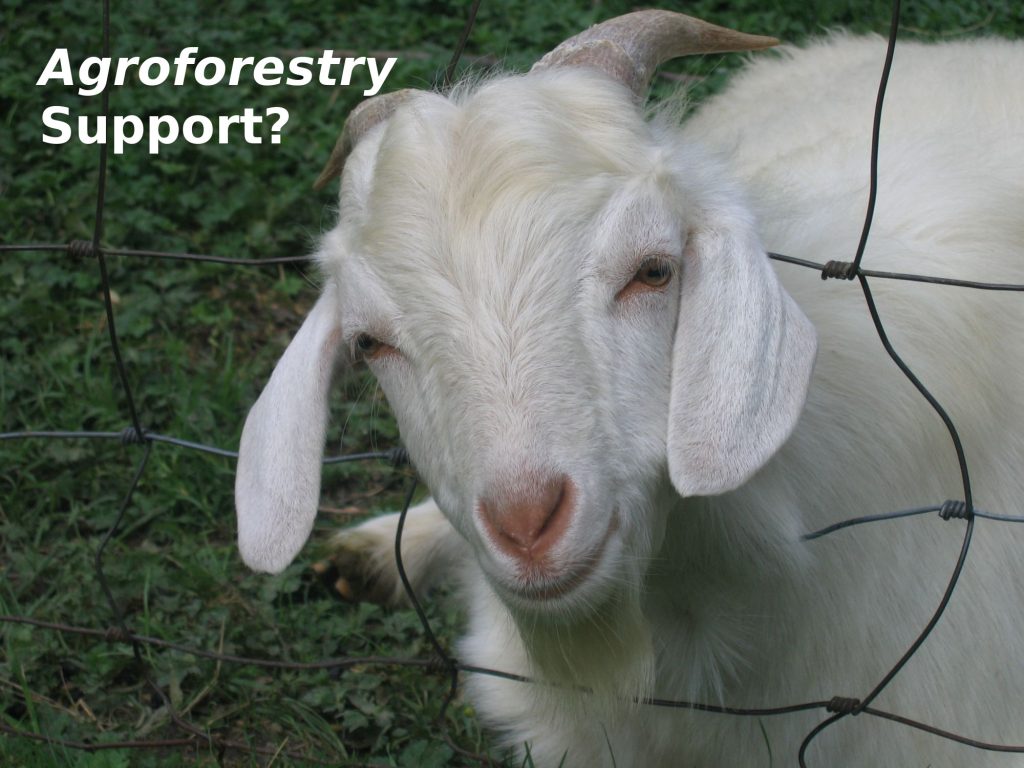Getting Started in Agroforestry: Part 6, Support
by George Powell
Agroforestry support, or lack thereof, continues to be a bit of a barrier and disadvantage to using agroforestry practices. This is slowly starting to change as agroforestry, and particularly silvopasture, gains traction as climate change strategy for food production.
All the same though, for both those new to agroforestry, and those not so new. The key to happy future is probably best summed by up Barry Schwartz: keep your expectations low.
If you’ve read this entire series, chances are you have more questions now than before you started. But, that is okay. You should now have the right questions to guide your agroforestry planning. This last article will help guide you to know which questions to answer by yourself, and which questions to seek out others to answer.

Feel like you can’t move forward with your agroforestry plans? You have knowledge and skills. You will likely need new knowledge and skills as you venture in the world of agroforestry. But don’t count on a detailed production guide to help you move forward.
Remember also that the key to good agroforestry design is understanding and managing the interactions. And these interactions change through time as the system develops. Whatever plans you make therefore, need to be adaptive and flexible. Agroforestry systems are dynamic and resilient. You and your plans need to be a bit of both too.
Temporary vs Ongoing Support Needs
Separating your agroforestry support needs into one-time vs ongoing can help you decide if you want to invest in outside help or invest in your own education.
There is a large body of free information out there for you to sort through. Probably way too much free, generic information. There are also short-courses and workshops. And there are hundreds of how-to videos online.
YouTube is nice, but if the option is there, you should also seek out your peers. Learn from others that are using agroforestry successfully. And, perhaps more informatively, find someone who tried and failed.
Consider also that some critical information may be needed at the design stage that you will not likely need again. For example, designing and installing an irrigation system. Other information and support needs are recurring. For example, pest management, soil amendments or grazing systems.
DIY or Professional?
Investing in your own education, reduces the need to keep turning to outside support. But if agroforestry is a side venture, remember that your time has value elsewhere: diversify, don’t diworseify.
If professional support is needed, it is always more cost-effective after you’ve narrowed the options under consideration. You will get better, more focused advice, if you do at least some of leg-work yourself.
For ongoing support needs, investing in self education is probably the best course of action. Even if it means delaying getting your agroforestry venture in the ground.
For some elements of your operation, you will need technical or professional help. Plans involving structural engineering or elements that can impact environmental or public health and safety, need professional support. And even if is not a legal requirement to use professionals for this type of work in your jurisdication, you should consider doing it to mitigate your risks.
The DIY electrical wiring job on the new barn and workshop may seem like great way to save some money. That is, until an electrical fire wipes out your investment. And you find out your insurance is void because you didn’t follow the building code.
Support Needs Grid
After you’ve weighed the pros and cons of where to source your support, you can break down your anticipated support needs into a grid matching:
- How frequently you need information: short-term or one-time support at start-up vs ongoing support;
- Any applicable regulations or prominent risks that would compel you to seek out a professional.

Use this decision grid to guide when to seek outside assistance. You now have all the pieces to get started with an honest evaluation of your potential agroforestry venture.
And you may decide you don’t have enough information, or agroforestry suppport to meet your goals. And, that is a valid and valuable planning outcome to avoid costly mistakes.
To know that you do not know, is best.
Subscribe via RSS
